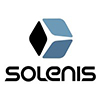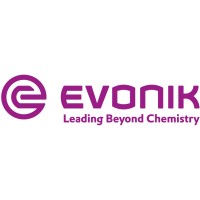-
For 65 years, Merichem has provided environmentally responsible handling of spent caustics and other secondary materials that result from refining, natural gas and petrochemical processing. Merichem Caustic Management Services safely transports your secondary materials to Merichem manufacturing facilities – as feedstocks for chemical manufacturing or as process chemicals to other end-users. We handle spent streams as non-waste activity, reducing your reportable wastes. Why ...
-
Axens is a group providing a complete range of solutions for the conversion of oil and biomass to cleaner fuels, the production and purification of major petrochemical intermediates as well as all of natural gas' treatment and conversion options. The offer includes technologies, equipment, furnaces, modular units, catalysts, adsorbents and related services. Axens is ideally positioned to cover the entire value chain, from feasibility study to unit start-up and follow-up throughout ...
-
Sulzer technologies for biofuel applications
In recent years, there have been many advancements in the development of biofuels for the global transportation markets. First generation fuel ethanol plants performed fermentation of grains into high purity ethanol. Further R&D led to the development of biofuels from renewable feed stocks: grains, baggase, switch grass, sugar cane, beets, turnips and wood pulp. These second generation biofuel processes produce high purity methanol, propanol, butanol and other oxygenated hydrocarbons ...
-
Price differentials between conventional and opportunity crudes compel refiners to process increasing percentages of lower valued opportunity crude. However, as many refiners have learned the hard way, opportunity crudes are tied to unique processing challenges. Furthermore, existing crude unit configurations may limit high profit opportunity crude to a disappointingly small proportion of the total unit blend. Processing a changing slate of opportunity crudes of varying compositions ...
-
LB 476 Level+ the solution for the most challenging processes
The LB 476 Level+ system adds that little extra to radiometric level measurements, which makes it the perfect system for challenging processes. By using the outstanding implemented compensation functions, level measurement falsifications, e. g. due to gas density fluctuations or due to product build-ups, belong to the past. Compared to the classic radiometric level measurement, LB 476 Level+ enables the storage of two calibration curves and, beyond, the simultaneous monitoring ...
-
Neles Easyflow high-performance solutions perfectly complement our portfolio with a quality range of pre-engineered products designed for use in many standard applications and process conditions. The portfolio delivers the same high quality and attention to detail that matters most, like you always expect from Valmet. Neles Easyflow solutions offer a complete suite of products designed to work together for easy creation of automated valve assemblies, delivering reliable, ...
-
Optimised Pressure Swing Adsorption
Pressure Swing Adsorption (PSA) is a well-established gas separation process in hydrogen purification, helium purification and air separation among others. In addition to engineering, the adsorbents selected and employed in the PSA process are extremely important in determining the performance of a PSA unit. Loading Diagram There are a significant number of contaminants that require removal from a standard gas stream. Different layers of adsorbents are commonly used to remove ...
-
Restoring production efficiency & NOx reduction by eliminating SCR fouling
Problem: SCR fouling is typically caused by refractory or insulation fibers that accumulate and block the face of the catalyst, eventually leading to substantial flow disruption and excessive pressure drops, typically worsening over time. This pressure drop and flow maldistribution will cause production rate limitations, unplanned outages, and environmental compliance issues, as well as reduce he catalyst life. Solution: Proven methods for keeping SCRs operating efficiently ...
-
PURASPEC CLEAR Chloride guards
Chlorides in a refinery. Where does it come from? Chlorides are introduced into the refinery flowsheet in several ways. Some crude sources can bring both inorganic and organic chloride content. Desalter processes and chemical additives are used to remove chlorides and prevent corrosion and fouling caused by these chlorides. The other major source is from the Catalytic Reforming Unit (CRU). This unit upgrades straight run naphtha value for use in the gasoline pool or as petrochemical ...
-
Innovative solutions and measurable results from Solenis
For more than 100 years, Solenis has been dedicated to helping refineries operate more efficiently and profitably. Achieving these goals requires innovative chemistries, advanced monitoring and control systems, and expert support.
-
OPTIMAX® Heat Exchanger helps achieve a more efficient CAPEX
Watlow has over 40 years of experience designing and manufacturing heat exchangers, and we have the knowledge, experience and expertise required to create optimal heating solutions. Watlow has taken the tried and true, critical design criteria and improved it to create a new generation heating technology – the OPTIMAX® Heat Exchanger. Watlow’s new OPTIMAX technology combines optimal fluid dynamics, efficient heat transfer, low pressure drop and a compact and ...
-
TRI-CON Series H2 Applications
The number of unique technical attributes of the product, as the cone-in-cone seating design with the multiple laminations and the metal seat makes the series TRI-CON to an all rounder for many different industrial applications. Zwick valves are used for industrial and exhaust gases, liquids, hot water or steam at lowest as well at high temperature zones up to 815°C. The TRI-CON is utilized extensively in the chemical, petro-chemical, oil & gas, offshore and district heating ...
-
TRI-CON Ball & Gate Valve Replacement
TRI-CON Features & Benefits: Features - Unique triple-offset, conical seating, Metal-to-metal seating, Unique, self-centering disc design, Emission-control technology, Superior bearing/bushing design, Laminated seal ring. Benefits - Zero leakage in demanding services, Inherently firesafe, Low torque required, Elimination of jamming due to thermal expansion, Bi-directional shutoff capabilities.
-
Elemental Analysis for Refining and Petrochemicals
Seamless Laboratory and Process Analysis for Total Sulfur and Nitrogen. As expected shifts to petrochemical and crude oil-to-chemicals (COTC) projects expand through 2050, the need for elemental analysis in refining and petrochemical continues to grow. Refiners must meet stringent requirements due to the increase of nitrogen and sulfur in the crude, requiring more focus on processing and control. Join us to learn about laboratory and process analysis for total sulfur and nitrogen. During ...
-
How grab sampling can help improve your plants safety
While grab sampling can be a dangerous and hazardous process for both operators and their surrounding environment, too often safety takes a back seat to other day-to-day considerations. If this sounds familiar, tune into this sponsored webinar. It's your opportunity to focus on areas in your plant where safety is a concern and learn methods for ensuring sampling that is not only safe and effective, but also representative. In this webinar, you'll examine hazards associated ...
-
Optimizing the value of your unloaded catalyst
The metals contained in spent catalysts offer a valuable follow-on revenue source, but how can you be sure to achieve a fair settlement or receive top dollar? You also need to balance demands of sustainability and lowered environmental impact with ease of recovery and settlement. This webinar gives you an introduction to the precious and base metal management cycle in catalysts and specifically provides you with tips for ensuring a high quality and accurate precious metal settlement, ...
-
Unleash the potential of your Naphtha Steam Cracker
The global ethylene market grows at 3.0-3.5% annually, which amounts to 6-7 MM MTA increase in demand every year. Greater than 95% of ethylene is produced using steam cracking. The two of the main feedstocks for steam crackers are naphtha and ethane with each supplying >45% of all ethylene production. Ethane cracking tends to have lower Cash Cost of Production, supply is regional and insufficient to meet the global ethylene demand. Naphtha cracking has several disadvantages: ...
-
CDU desalter processing with interface control
In this webinar, you will find out how Tracerco’s advanced multi-phase nucleonic instrumentation can analyse desalter performance and improve crude blending capacity. Discover opportunities to: - Improve environmental impact, compliance and energy usage - Reduce unplanned trips and downtime - Optimise chemical dosing (demulsifiers/neutralisers) - Reduce overhead corrosion, as well as catalyst deactivation in FCC - Improve process control enabling data driven insights With ...
-
An introduction to Sinopec Hydrocracking Technologies
This webinar gives you an overview and understanding of hydrocracking and its applications, with an emphasis on technologies and catalysts developed by Sinopec and its research arm, Sinopec Fushun Research Institute of Petroleum and Petrochemicals (Sinopec FRIPP). You will first get an introduction to hydrocracking including feed processing and target output products. Commercial considerations include market share and reference installations such as 40 hydrocracking units designed ...
-
How turbomachinery can support decarbonization
With the hydrocarbon processing industry’s efforts to decarbonize, hydrogen and Carbon Capture Utilization and Storage (CCUS) have further moved into focus as viable alternatives for transforming existing energy markets. Both hydrogen and CO2 provide ample opportunities to be used in hydrocarbon processes either in molecular form or as feedstock. At the same time, the unique physical properties of both hydrogen and CO2 can make them a challenge for process equipment such as ...
-
Technologies to enhance Ethylene production
In this presentation, three technologies will be introduced. This first is swirling element radiant tube (SERTTM) technology for steam cracking furnaces. In this technology, you will find how heat transfer theory is applied to overcoming the challenges of cracking pyrolysis to meet targets. Successful commercial cases will demonstrate the technical advantages of SERTTM technology. Cracking furnaces with SERTTM technology have longer operating days, lower tube wall temperature ...
-
Steam Cracker recycle processing and product upgrade options
LPG and light naphtha generated in a refinery complex (from both straight-run and conversion units) are sent to the ethylene cracker as feedstock. There is more i-paraffin than n-paraffin in LPG and light naphtha generated from a hydrocracker and reformer, in particular, i-butane and i-pentane. When cracking i-paraffin and n-paraffin separately in an ethylene cracker, the yield of ethylene and propylene is different; n-paraffin can generate 20wt% of “ethylene + propylene + butadiene” ...
-
Advances in benzene derivatives production
Xylene and ethylbenzene are important benzene derivatives. In this presentation, you will learn about recent advances in the production process and catalysts of xylene and ethylbenzene. Xylene production is one of the most important aromatic producing processes. You will learn the details of process technology introduction and catalyst features of aromatics transalkylation developed by Sinopec, as well as the process strategies of raw material expansion, Inferior feed tolerance, ...
-
Deep catalytic cracking technology for maximizing the production of chemicals
Optimization of light olefins (including ethylene, propylene and butene) production has become one of the most competitive options for refiners in the transition. Compared with conventional FCC, FCC technologies which optimized propylene production are helping refiners to restructure their product configuration, from fuel to petrochemical production. You will learn some successful commercial cases, which are aimed to help refiners to select the most suitable and competitive ...
-
Decarbonization with hydrogen solutions
Demand for hydrogen is expected to increase up to ten-fold by 2050 when multiple industry reports predict 8-24% of the world's final energy demand will be supplied by hydrogen. Hydrogen has a unique ability to address and ˜hard-to-decarbonize' sectors including refining, chemicals, steel, heating, long-haul transport, and long-term power storage and all of which currently produce significant CO2 emissions. To achieve this, hydrogen must be produced with significantly lower carbon ...
-
Enabling circularity via plastics chemical recycling
Chemical recycling of plastics is an emerging route to supplement mechanical recycling since polymers can be converted into monomer form. As opposed to mechanical recycling, wherein the polymer properties degrade with each cycle, the monomers can be re-polymerized without any polymer property degradation. Petrochemical and refining operations of the future will include more plastics oil, obtained from chemical recycling, in the feedstock mix to establish circularity in the ...



































